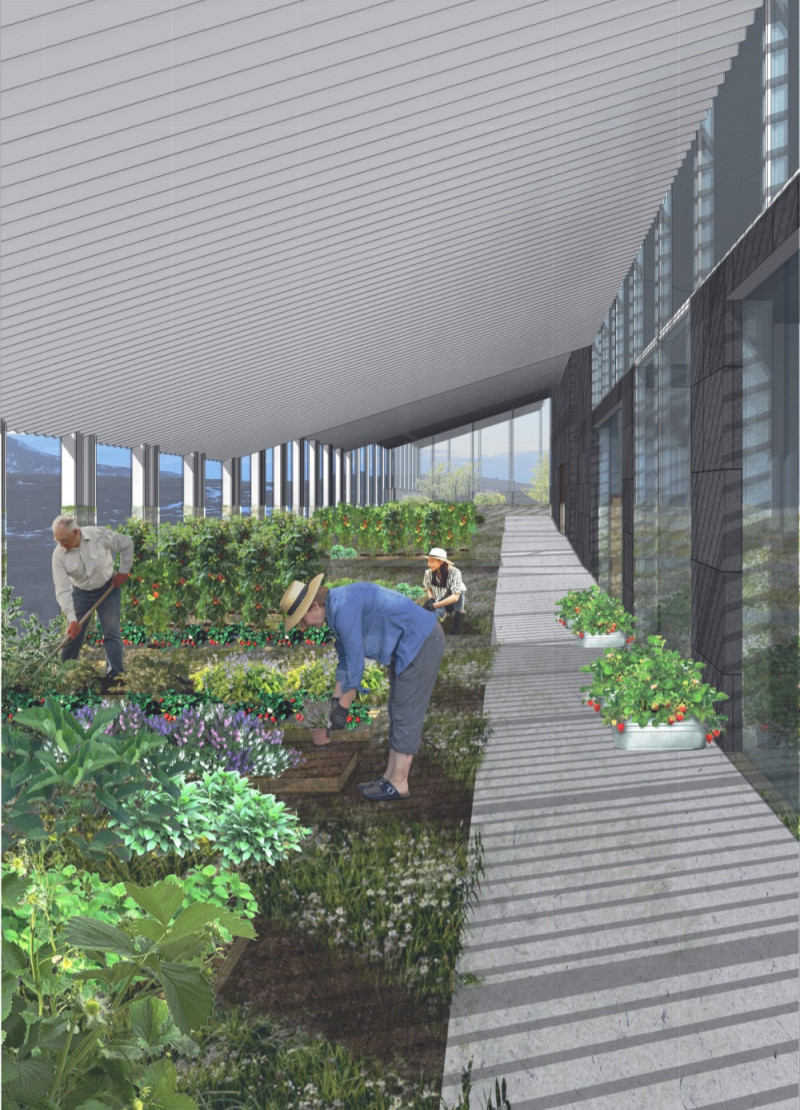5 key facts about this project
The Lake Myvatn Community House is located in the unique landscape of Iceland's Lake Myvatn region. It serves the local community and emphasizes principles of sustainability and environmental harmony. The design is centered around three important elements: landscape, water, and greenhouse, which work together to create a functional space that respects its surroundings.
Sustainable Design Principles
Central to the design is a commitment to sustainability. The building uses geothermal energy for both heating and hot water, reducing reliance on outside resources. This local energy source contributes to the overall goal of self-sufficiency. Rainwater collection and organic waste processing are also key features, forming a closed-loop system that enhances the building’s ecological impact.
Orientation and Energy Efficiency
Solar exposure is maximized through careful orientation. By facing south, all rooms benefit from natural light, fostering a pleasant interior environment. The greenhouse rooms, which surround the building, are designed to capture sunlight effectively from different directions throughout the day. This approach not only improves energy efficiency but also encourages local food production, reinforcing a connection between the community and its environment.
Materials and Local Context
The choice of materials reflects a deep connection to the landscape. Locally sourced basaltic stone and recycled steel establish a strong sense of place. These materials contribute to the building’s durability and thermal performance. The palette enhances the overall design while ensuring that the structure harmonizes with the surrounding environment, both visually and functionally.
Architectural Adaptability
Design elements include adaptable elevations that respond to Iceland's varied weather conditions. Panels in the greenhouse help to control light pollution while improving thermal efficiency. These thoughtful details ensure that the building remains comfortable and operational throughout the year, balancing practicality with a design that respects its ecological context.






















































